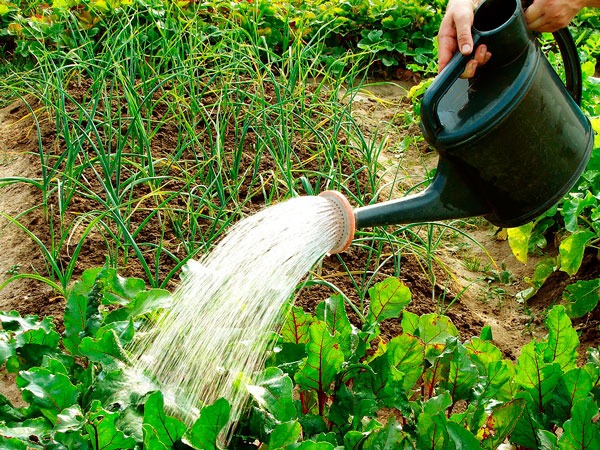Plant Clinics
Helpline: 417-2514
Monday 9 a.m.-1 p.m., Clallam County Courthouse, Port Angeles
Saturday 9 a.m.-1 p.m., Demonstration Garden, 2711 Woodcock Road, Sequim
Brown Bag Seminars
Held on the second and fourth Thursdays at noon at the Clallam County Courthouse (commissioners meeting room), 223 E. Fourth St., Port Angeles
July 9: “Using Herbs,” B. Heckard and S. Tysver
July 23: “Garden Ponds and Water Features,” J. Bahr
Class Act Seminars
Held from 10-11 a.m. at the Demonstration Garden, 2711 Woodcock Road, Sequim
July 11: “Caring for Perennials,” M. Elliott
July 25: “Herbs,” S. Tysver and B. Heckard
Friday Walks in the Garden
Held on the Second Friday of each month May-September at the Fifth Street Community Garden, 328 E. Fifth St., Port Angeles.
These educational walks are from noon-1 p.m. Topics related to vegetable gardening, herbs and other food crops are tailored to what is happening in the garden that month.
Fun and educational walks are July 10, Aug. 14 and Sept. 11.
General tips
July is typically the start of the summer drought with no significant rain expected for the next 45 to 60 days. Water early in the morning or late in the afternoon to minimize water loss caused by evaporation. If plants are wilted, water immediately. Water slowly and long enough to soak root zones. Consider providing drip irrigation on a timer to hanging baskets and containers.
All new plantings should be watered two to three times a week, even if they are “drought tolerant.” Always water plants before adding fertilizer. Apply two to three inches of mulch to garden beds to hold in moisture and discourage weeds.
Ornamental Gardens
•Annuals: Sow cosmos, calendula and zinnia seeds now for September color. Deadhead faded flowers to extend flowering. Cut back straggly plants to improve their appearance and stimulate a second bloom. Stake sunflowers. Fertilize plants in containers every two weeks, as they lose nutrients from frequent watering.
•Bulbs, Corms, Rhizomes and Tubers: Divide and transplant crowded spring-blooming bulbs and rhizomes if flowering has declined. Fertilize dahlias monthly.
•Lawns: Water deeply once a week to keep lawn green or let lawn go dormant by watering once a month. Mow regularly to prevent weed seed spread. Leave clippings behind if they are not too tall or weedy. Do not fertilize the lawn during hot, dry weather. Do not start a lawn from seed now; sod may be laid if you are willing to water it.
• Perennials: Stake tall plants such as lilies, dahlias and delphiniums. After lilies have bloomed, cut the stalk to just below the lowest flower, the remaining stem and leaves produce energy for next year’s flowers. Harvest lavender as the buds show color, but before they open.
Prune off about 3 inches from the growing tips of chrysanthemums to produce fuller and studier fall plants. Do not fertilize roses after July.
• Shrubs and Trees: If needed, prune spring-blooming trees and shrubs including forsythia, kerria, pieris, azalea, rhododendron, lilac and viburnum.
Edible Gardens
• Berries: Clean up and fertilize June-bearing strawberries (not day neutral or everbearing strawberries) after. When first-year canes of erect and semi-erect blackberries reach 4 feet high, top them. Continue organic fertilizer regimen for blueberries (1 Tablespoon fish emulsion in 1 cup water per bush) at beginning of month. (No ammonium sulfate in July.) Cover fruiting plants with netting to protect harvest from birds and other wildlife.
• Fruit trees: Thin plums to 2-4 inches apart on a branch; thin apples and pears to 1-2 fruits per cluster spaced 6-8 inches apart on the branch. Support fruit tree branches that are heavily loaded. Remove watersprouts and suckers from fruit trees.
• Vegetables: Remove finished crops; replenish soil with compost. For a fall/winter garden, sow broccoli, carrots, onions, parsley, and peas by mid-July and bush beans, beets, kale and lettuce by the end of July. Stop watering garlic as it naturally starts to dry and harvest when four or five leaves are still green. Gather and dry herbs.
Watch tomatoes for late blight and immediately remove infected leaves and fruit including those that have fallen from the plant. It may be necessary to remove the entire plant. Do not compost diseased plant parts.
Contributions to this article by Washington State University-certified, Clallam County Master Gardeners.



